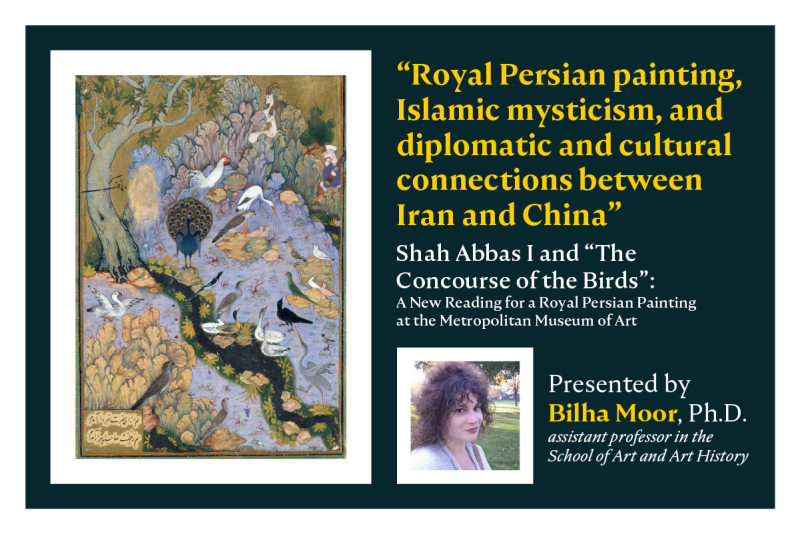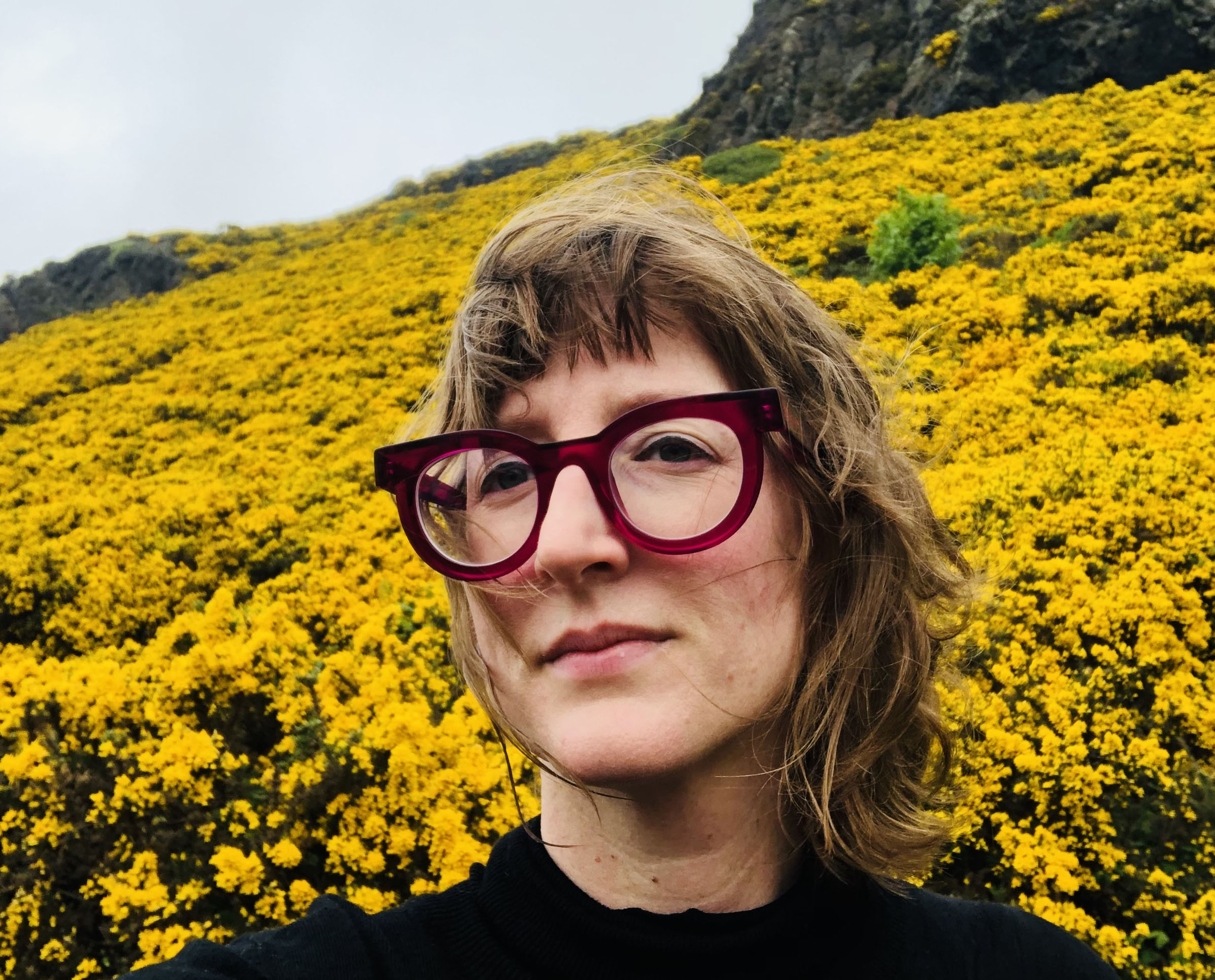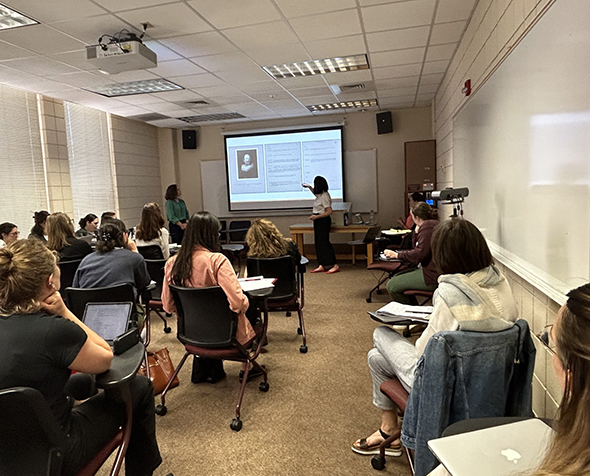Livingston Lecturer Provides Fresh Take on Revered Royal Persian Painting, Cultural Connections between Iran and China

Bilha Moor had been studying Islamic figurative painting for years when something in her perception of “The Concourse of the Birds,” a celebrated illustration from Isfahan (Iran) at the turn of the 17th century, changed — enabling her to view it in a whole new light.
“One day I looked at it and all of a sudden thought, there is another way of seeing this, another layer of understanding it, another layer of meaning,” Moor, an assistant professor of Islamic Art History at the University of Denver, said.
She will share her insights about the illustration’s broader meaning and significance, which were recently published in the academic journal “Artibus Asiae,” as this year’s speaker for the John C. Livingston Lecture in World History on Oct. 18.
The painting, currently housed in the Metropolitan Museum of Art in New York, is part of the only known illustrated manuscript commissioned under the patronage of Iran’s ruler Shah Abbas in the early 17th century. The royal manuscript is a copy of the Persian mystical poem “Conference or Speech of the Birds,” written by the poet Attar in the late 12th century.
“The main interpretation that the painting received in scholarly literature was that the birds’ journey is analogous to the mystical path of the human soul to unite with God,” Moor said.
“I argue that the painting includes a portrait of Shah Abbas, and that it is an allegory for his idyllic rule over his subjects in the capital Isfahan.”
She also examines diplomatic and cultural connections between Persia and China in the early modern period and proposes that the illustration references Ming Dynasty paintings of the “100 Birds,” which “convey the peace and prosperity of the nation and its admiration of the sovereign.”
Moor explained that “Isfahan, where the manuscript was produced, was referred to as ‘half of the world. ”It was a cosmopolitan city, a place for people of different backgrounds, all levels of society and foreign visitors to mingle and engage in trade.”
Enlivening History, Art and Culture with Experiential Learning
Interested in cultivating a richer grasp of Middle Eastern history through art and material culture, Moor studied art and architecture of the Islamic lands at the Hebrew University of Jerusalem, where she earned a PhD.
Her dissertation explored illustrated Islamic cosmographies of the 16th century. She subsequently held the Andrew Mellon Postdoctoral Fellowship of Islamic Art at Northwestern University before joining DU’s School of Art & Art History in 2018.
“I was drawn to DU because the department of Art History studies a wide range of geographical regions, faiths and cultures, including Europe, the Americas, the Middle East, North Africa and East Asia,” she said. Her research focuses on Islamic figurative painting — mainly illustrated manuscripts between 1300-1700 — and on early Islamic Arabic inscriptions and their architectural, historical and religious contexts.
Her courses examine religious diversity in art of the Islamic lands and artistic connections with neighboring cultures. “We explore what makes art ‘Islamic’ and discuss encounters between the Middle East and Europe and the Middle East and China,” she said.
Moor’s research has taken her to museums and collections in the United States, Europe, the Middle East and India to study illustrated manuscripts. She has also conducted research in archives and archeological sites in the Negev Desert in Southern Israel. These hands-on ventures continue to bring the past to life for her and her students in an intimate way.
“Reading a manuscript that is 500 years old and knowing that the Ottoman sultan likely touched it, too, is wonderful,” she said.
An experiential approach likewise enlivens the undergraduate and graduate classes she teaches in a variety of departments including the School of Art & Art History, the honors program, the Middle East Studies minor and the DU/Iliff Joint Doctoral Program in the Study of Religion.
“It is particularly rewarding teaching upper-level classes at DU’s Special Collections, where the students and I examine facsimiles of Islamic illustrated manuscripts of scientific, medicinal and historical texts as well as heroic and romantic Persian poetry,” she said.
“The classes provide direct experience in researching works of art and allow us to raise questions on materiality, book production, calligraphy, patronage, narrative and the relationship between text and image.”
The courses explore more than 1,000 years of art, architecture and material culture in the pre-modern Islamic lands from Spain in the West to India in the East. Content ranges from the transitional period from Byzantium to Islam and the architecture of mosques, palaces and tombs, to figuration and abstraction, Islamic mysticism, portraiture, representations of kingship and Persian myth.
Although Moor’s teaching concentrates on medieval and early modern Islamic art it provides students with skills for how to consider works of art from different eras and cultures and understand their form, content and larger historical and cultural significance, according to Moor.
When: Oct. 18
5 p.m. reception
6 p.m. lecture
Where: Sturm Hall, Lindsay Auditorium
The John C. Livingston Lecture in World History highlights a current CAHSS faculty member and their work related to history. Sign up to attend Moor’s Livingston lecture here.





